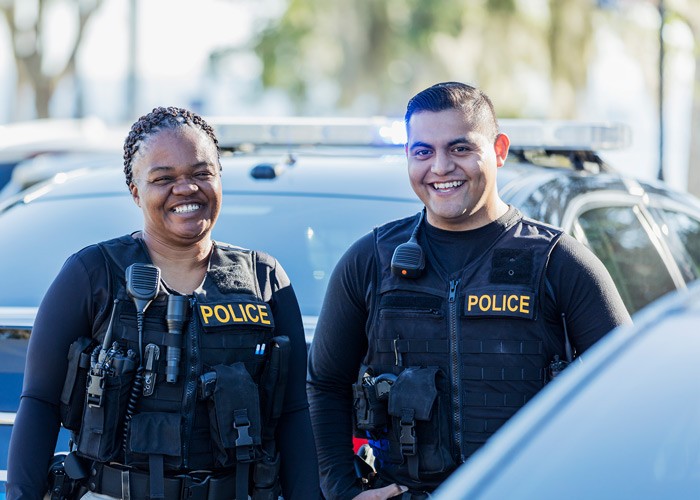Introduction
In a rapidly changing world, law enforcement agencies are facing a new challenge: building a brand that not only upholds justice but also fosters trust, collaboration, and accountability within the community. Gone are the days when law enforcement was just about enforcing laws; today, it’s about building bridges, embracing diversity, and ensuring public safety through proactive measures. In this guide, we’ll explore actionable strategies to create a robust police department brand that resonates with both officers and the communities they serve.
Section 1: Embracing the Core Elements of a Strong Police Department Brand
In this digital age, branding is essential for law enforcement agencies to establish a strong identity. Beyond badges and uniforms, the essence of a brand lies in its commitment to transparency, community engagement, and continuous improvement.
Practical Tips:
Define Your Brand Values: Outline the core values that guide your department’s actions and interactions.
Create a Unified Online Presence: Develop a user-friendly website and social media platforms that provide easy access to policies, updates, and community events.
Tell Your Story: Share success stories, officer profiles, and community partnerships that showcase your agency’s positive impact.
Section 2: Fostering Trust through Transparent Practices
Transparency isn’t an option; it’s the foundation of trust between law enforcement and the community. By being open about policies, actions, and decisions, agencies can bridge the gap and build lasting relationships.
Practical Tips:
Accessible Information: Make key information, such as use-of-force policies and crime statistics, easily accessible to the public.
Interactive Conversations: Organize town hall meetings, webinars, and Q&A sessions to address community concerns and feedback.
Timely Communication: Establish protocols for promptly sharing updates about incidents or ongoing investigations.
Section 3: Cultivating Community Partnerships for Effective Policing
Community engagement goes beyond mere collaboration; it’s about creating a sense of belonging, ownership, and shared responsibility. This section highlights the significance of community involvement in proactive crime prevention.
Practical Tips:
Build Strong Networks: Establish relationships with local businesses, schools, and community organizations to foster collaboration.
Neighborhood Watch Programs: Initiate programs that empower citizens to actively participate in reporting suspicious activities and preventing crime.
Youth Outreach: Organize events, workshops, and mentorship programs to build positive relationships with young community members.
Section 4: Elevating Professionalism through Training and Growth
A brand built on professionalism demands officers who are well-equipped, adaptable, and continuously improving. This section outlines how investing in training and development enhances your agency’s credibility.
Practical Tips:
Comprehensive Training Programs: Develop a structured training curriculum that covers de-escalation, cultural sensitivity, mental health awareness, and technological advancements.
Incentivize Learning: Offer rewards and recognition for officers who actively engage in professional development.
Leadership Development: Provide pathways for officers to grow into leadership roles within the department.
Section 5: Innovative Strategies for Attracting Top Police Candidates
Recruitment is the gateway to shaping your agency’s future. By showcasing your commitment to diversity, inclusivity, and community engagement, you can attract candidates who align with your values.
Practical Tips:
Authentic Messaging: Craft recruitment materials that emphasize your agency’s dedication to community service, growth, and accountability.
Social Media Engagement: Use platforms like Instagram, Twitter (X), and LinkedIn to share day-to-day officer experiences, community events, and success stories.
Collaborate with Influencers: Partner with local influencers who can amplify your agency’s positive impact and values.
Diversity Initiatives: Highlight your agency’s efforts to ensure equal opportunities and celebrate diversity among your ranks.
Showcase Alumni Stories: Share stories of past recruits who have excelled in their careers after joining your agency.
Conclusion: Forging a Bright Future Through Strong Branding
The path to a resilient police department brand involves embracing transparency, community collaboration, continuous development, and innovative recruitment practices. By implementing these practical strategies, law enforcement agencies can create a brand that not only attracts top candidates but also establishes enduring trust and support within the communities they serve. Remember, a strong brand is a reflection of your agency’s values in action – a beacon of hope and security in an ever-evolving world.






